Table of Contents
Plot and Storyline
Welcome to Oppenheimer review. The film begins with Oppenheimer being recruited by General Groves to lead the Manhattan Project. Oppenheimer is initially reluctant to accept the job, but he is eventually persuaded by the belief that the atomic bomb could end the war and save lives.
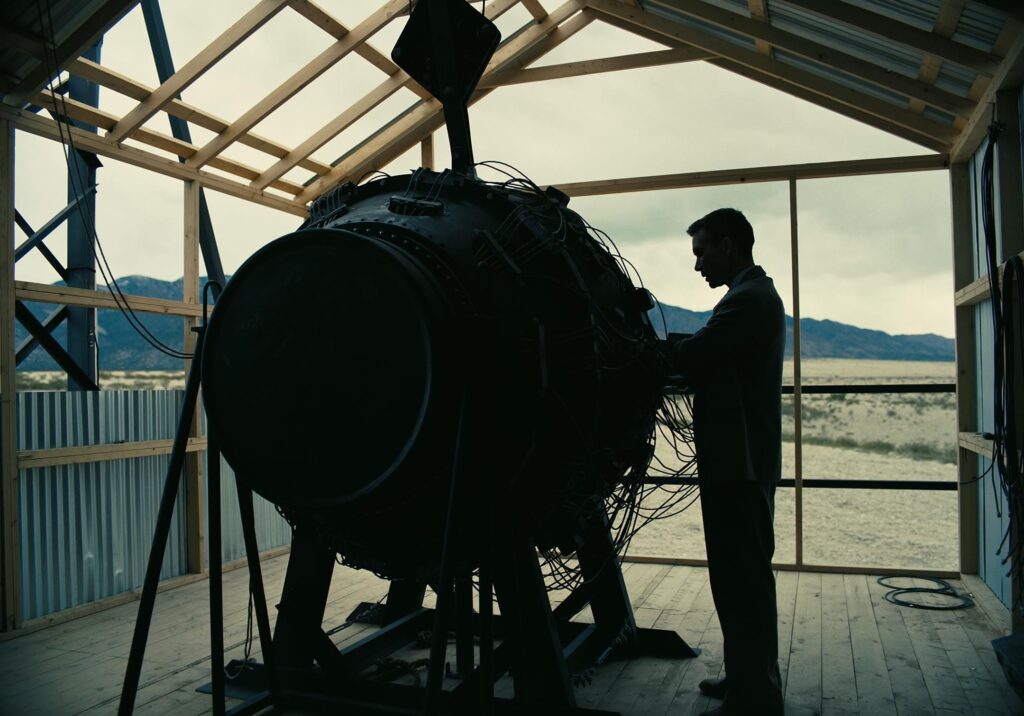
Oppenheimer and his team work tirelessly to develop the bomb, but they face many challenges along the way. They must overcome scientific obstacles, political infighting, and the constant threat of espionage. Oppenheimer also struggles with the moral implications of his work. He knows that the atomic bomb is a devastating weapon, and he is haunted by the possibility that it could be used to kill millions of people.
In July 1945, Oppenheimer witnesses the first successful test of the atomic bomb. He is horrified by the power of the weapon, and he begins to question whether he made the right decision in developing it.
After the war, Oppenheimer becomes a vocal advocate for nuclear disarmament. He argues that nuclear weapons are too dangerous to exist, and he works to convince the world to ban them. However, his efforts are ultimately unsuccessful, and the world enters a new era of nuclear deterrence.
Oppenheimer is a complex and tragic figure. He is a brilliant scientist who helped to create one of the most powerful weapons ever known, but he is also a deeply humane man who is haunted by the consequences of his work. The film is a powerful exploration of the moral dilemmas faced by scientists and the responsibility that comes with great power.
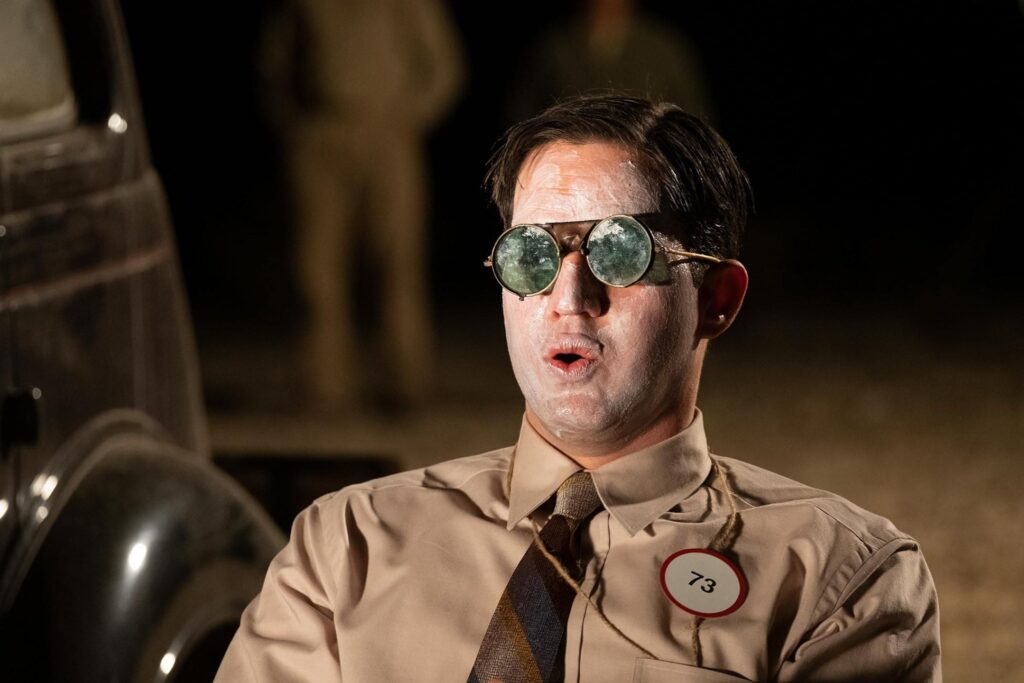
Oppenheimer is a must-see film for anyone interested in the history of the atomic bomb, the life of J. Robert Oppenheimer, or the ethical implications of scientific discovery. It is a powerful and thought-provoking film that will stay with viewers long after they leave the theater.
Character development
The character development in the movie “Oppenheimer” is complex and nuanced. The film follows Oppenheimer’s journey from a brilliant physicist to the scientific director of the Manhattan Project, to a vocal advocate for nuclear disarmament. Along the way, he is forced to confront the moral implications of his work and the consequences of his choices.
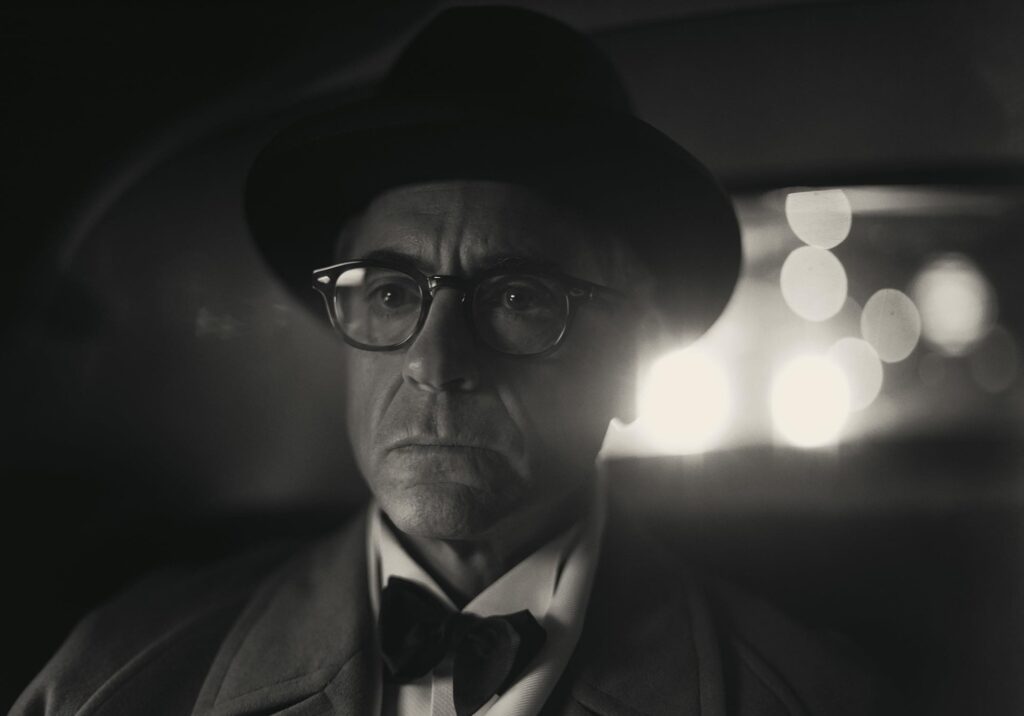
One of the most important aspects of Oppenheimer’s character development is his struggle with his own conscience. He is a deeply humane man, and he is haunted by the possibility that his work could lead to the deaths of millions of people. However, he is also driven by a desire to win the war and to save lives. He believes that the atomic bomb is necessary to end the war quickly and to prevent the Nazis from developing their own atomic bomb.
As Oppenheimer works on the atomic bomb, he begins to question whether he has made the right decision. He is horrified by the power of the bomb, and he realizes that it could be used to commit mass genocide. He also becomes aware of the dangers of nuclear proliferation, and he fears that the atomic bomb could lead to a new arms race.
After the war, Oppenheimer becomes a vocal advocate for nuclear disarmament. He argues that nuclear weapons are too dangerous to exist, and he works to convince the world to ban them. However, his efforts are ultimately unsuccessful, and the world enters a new era of nuclear deterrence.

Oppenheimer’s character development is a reflection of the moral complexity of his work. He is a brilliant scientist who helped to create one of the most powerful weapons ever known, but he is also a deeply humane man who is haunted by the consequences of his choices. The film explores the inner turmoil that Oppenheimer experiences as he struggles to reconcile his scientific brilliance with his humanity.
In addition to Oppenheimer’s character development, the film also explores the character development of a number of other important figures in the Manhattan Project, including Edward Teller, Hans Bethe, and Richard Feynman. These characters also face difficult moral choices, and they are forced to confront the consequences of their work.
The character development in “Oppenheimer” is one of the film’s strongest assets. The characters are complex and well-developed, and their journeys are both engaging and thought-provoking.
Themes
The power and responsibility of science: Oppenheimer’s work on the atomic bomb had a profound impact on the world, and it forced him to confront the ethical dilemmas faced by scientists in the modern world. The film explores the question of how scientists can use their power responsibly, and the importance of considering the consequences of their work.
The ethics of nuclear war: The atomic bomb is a devastating weapon, and its use raises a number of ethical questions. The film explores the question of whether nuclear war is ever justified, and the moral implications of using such a powerful weapon.

The nature of good and evil: Oppenheimer is a complex and conflicted figure. He is a brilliant scientist who helped to create one of the most powerful weapons ever known, but he is also a deeply humane man who is haunted by the consequences of his work. The film explores the question of how good and evil can coexist within the same person, and the difficulty of making moral choices in complex situations.
The individual’s role in society: Oppenheimer’s work on the atomic bomb had a profound impact on the world, but he was just one individual. The film explores the question of how individuals can make a difference in the world, and the responsibility that we all have to use our power responsibly.
In addition to these general themes, the film also explores a number of other important topics, such as the nature of leadership, the importance of teamwork, and the cost of war.
“Oppenheimer” is a powerful and thought-provoking film that explores a number of complex themes in a nuanced and insightful way. It is a film that will stay with viewers long after they leave the theater.
The direction
Christopher Nolan is known for his meticulous direction and his use of innovative filmmaking techniques. In Oppenheimer, Nolan uses a variety of directorial techniques to create a visually stunning and emotionally resonant film.
One of the most striking things about Oppenheimer is its use of black and white film. Nolan has said that he chose to shoot the film in black and white because he wanted to create a more timeless and universal story. He also wanted to focus on the characters and their emotions, rather than on the special effects.
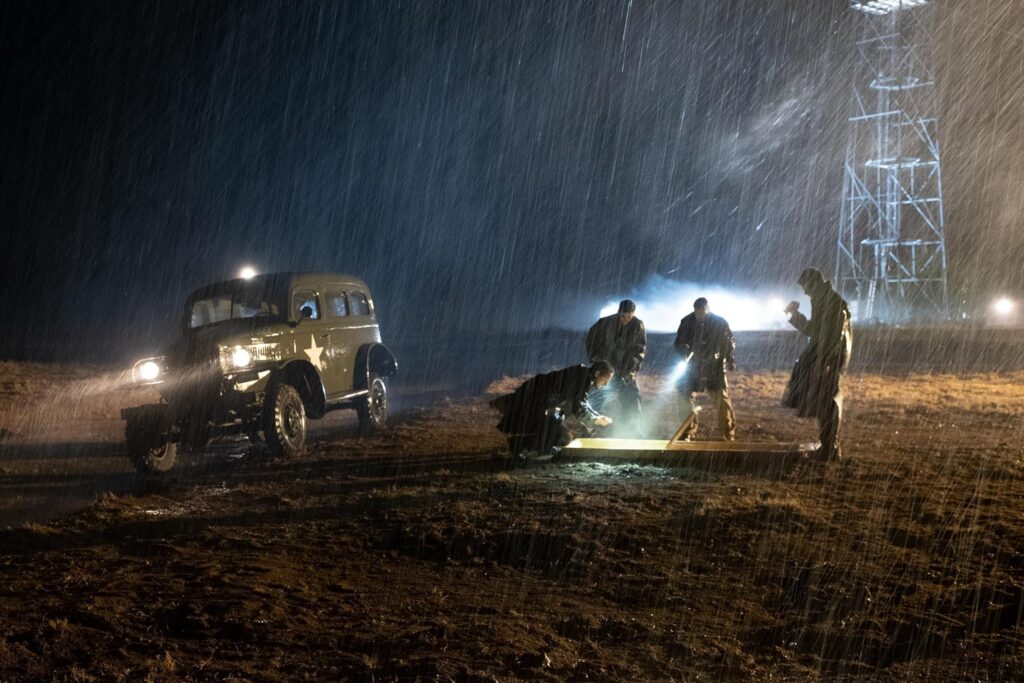
Nolan also uses a variety of other directorial techniques to create a sense of suspense and tension in Oppenheimer. For example, he often uses close-ups to focus on the characters’ facial expressions and reactions. He also uses long takes and tracking shots to create a sense of realism and immersion.
In addition to his use of black and white film and innovative camera techniques, Nolan also uses a variety of other directorial techniques to create a powerful and thought-provoking film. For example, he uses music and sound effects to create a sense of atmosphere and mood. He also uses editing to create a sense of pace and rhythm.
Overall, the direction of Oppenheimer is masterful. Nolan uses a variety of techniques to create a visually stunning and emotionally resonant film. His direction is one of the film’s greatest strengths.
Here are some specific examples of Nolan’s directorial techniques in Oppenheimer:
In the scene where Oppenheimer witnesses the Trinity Test, Nolan uses a slow-motion shot of Oppenheimer’s face to capture his reaction to the power of the atomic bomb.
In the scene where Oppenheimer is informed of the Hiroshima bombing, Nolan uses a single take to capture his reaction to the news. The camera pans from Oppenheimer’s face to the faces of his colleagues, showing their shared horror and grief.
In the scene where Oppenheimer testifies before the Atomic Energy Commission, Nolan uses a close-up of Oppenheimer’s face to capture his emotions as he is grilled by the commissioners.
Nolan’s direction in Oppenheimer is both technically impressive and emotionally resonant. He uses a variety of techniques to create a film that is both visually stunning and thought-provoking.
The cinematography
The cinematography of Oppenheimer is stunning. Director Christopher Nolan and cinematographer Hoyte van Hoytema use a variety of techniques to create a visually immersive and evocative film.
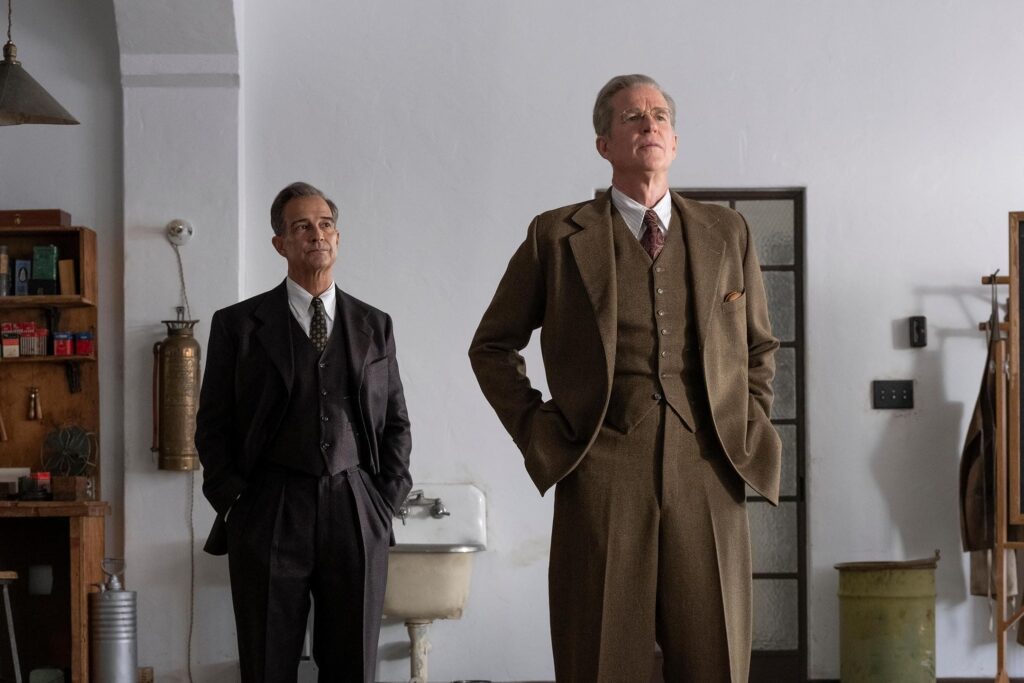
One of the most striking things about the cinematography of Oppenheimer is its use of black and white film. Nolan has said that he chose to shoot the film in black and white because he wanted to create a more timeless and universal story. He also wanted to focus on the characters and their emotions, rather than on the special effects.
The black and white cinematography also gives the film a sense of gravitas and weight. It helps to convey the seriousness of the subject matter and the moral complexity of Oppenheimer’s work.
In addition to its use of black and white film, the cinematography of Oppenheimer is also notable for its use of light and shadow. Nolan and van Hoytema often use chiaroscuro lighting to create a sense of drama and suspense. The film’s many close-ups of Oppenheimer’s face are particularly effective in this regard, as the play of light and shadow helps to convey his inner turmoil.
Nolan and van Hoytema also use a variety of other cinematographic techniques to create a visually stunning film. For example, they use long takes and tracking shots to create a sense of realism and immersion. They also use wide shots to capture the scale and scope of the Manhattan Project.
Overall, the cinematography of Oppenheimer is masterful. Nolan and van Hoytema use a variety of techniques to create a visually immersive and evocative film. Their work is one of the film’s greatest strengths.
Here are some specific examples of Nolan and van Hoytema’s cinematography in Oppenheimer:
In the scene where Oppenheimer witnesses the Trinity Test, Nolan and van Hoytema use a slow-motion shot of Oppenheimer’s face to capture his reaction to the power of the atomic bomb. The shot is lit from below, casting Oppenheimer’s face in shadow and creating a sense of awe and wonder.
In the scene where Oppenheimer is informed of the Hiroshima bombing, Nolan and van Hoytema use a single take to capture his reaction to the news. The camera pans from Oppenheimer’s face to the faces of his colleagues, showing their shared horror and grief. The shot is lit from the side, creating a sense of drama and tension.
In the scene where Oppenheimer testifies before the Atomic Energy Commission, Nolan and van Hoytema use a close-up of Oppenheimer’s face to capture his emotions as he is grilled by the commissioners. The shot is lit from the front, creating a sense of intensity and scrutiny.
The cinematography of Oppenheimer is both technically impressive and emotionally resonant. Nolan and van Hoytema use a variety of techniques to create a film that is both visually stunning and thought-provoking.
Music
The music for Oppenheimer was composed by Ludwig Göransson, who also composed the music for Nolan’s previous film, Tenet. Göransson’s score for Oppenheimer is a mix of orchestral music, electronic music, and choral music. It is a powerful and evocative score that perfectly complements the film’s visuals and themes.
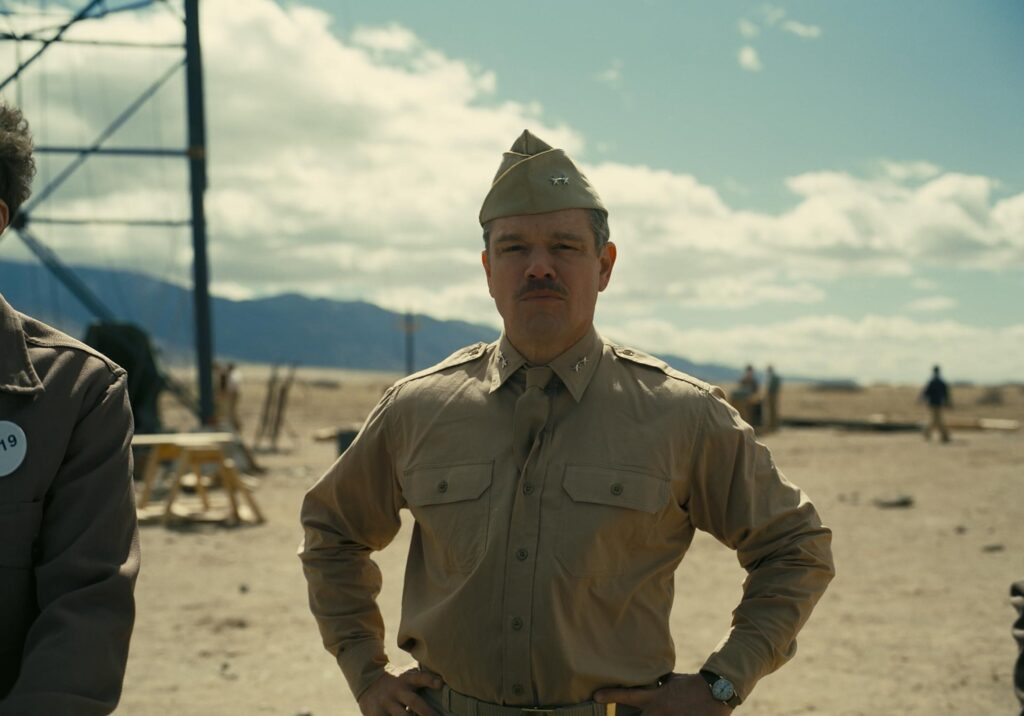
One of the most striking things about Göransson’s score is its use of the violin. The violin is often used to represent Oppenheimer’s inner turmoil and his complex emotions. The score also features a number of other instruments, including the cello, the piano, and the harp.
Göransson also uses a variety of electronic elements in his score. These elements help to create a sense of tension and suspense in the film. The score also features a number of choral pieces, which are used to convey the epic scale of the Manhattan Project and the moral weight of Oppenheimer’s work.
Overall, Göransson’s score for Oppenheimer is a masterful work of music. It is a powerful and evocative score that perfectly complements the film’s visuals and themes.
Here are some specific examples of Göransson’s music in Oppenheimer:
In the scene where Oppenheimer witnesses the Trinity Test, Göransson’s score is both awe-inspiring and terrifying. The music builds to a crescendo as the bomb explodes, and the audience is left with a sense of the bomb’s immense power and destructive potential.
In the scene where Oppenheimer is informed of the Hiroshima bombing, Göransson’s score is mournful and reflective. The music captures Oppenheimer’s horror and grief at the consequences of his work.
In the scene where Oppenheimer testifies before the Atomic Energy Commission, Göransson’s score is tense and suspenseful. The music reflects the pressure that Oppenheimer is under as he is grilled by the commissioners.
Göransson’s music for Oppenheimer is one of the film’s greatest strengths. It is a powerful and evocative score that perfectly complements the film’s visuals and themes.
Acting
The acting in Oppenheimer is superb.Murphy captures Oppenheimer’s brilliance, his humanity, and his inner turmoil with great skill.
Blunt brings warmth and compassion to the role, and she has great chemistry with Murphy. The supporting cast is also strong, with Matt Damon, Robert Downey Jr., and Florence Pugh all giving memorable performances.
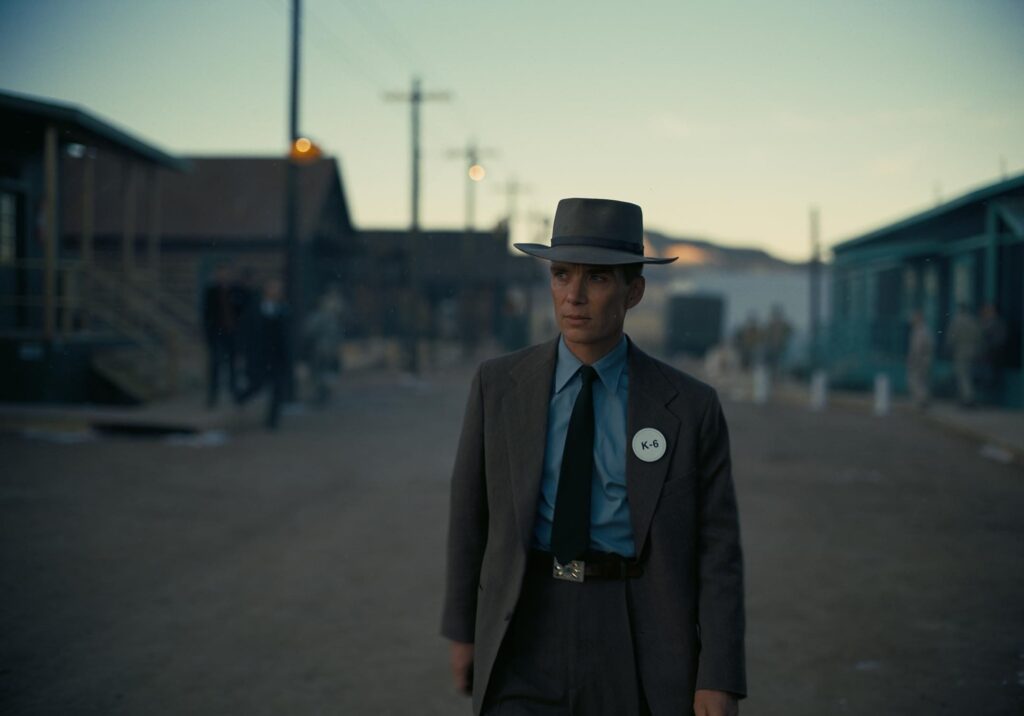
Here are some specific examples of the great acting in Oppenheimer:
In the scene where Oppenheimer witnesses the Trinity Test, Murphy’s performance is both awe-inspiring and terrifying. He perfectly captures Oppenheimer’s sense of wonder and horror at the power of the atomic bomb.
In the scene where Oppenheimer is informed of the Hiroshima bombing, Murphy’s performance is heartbreaking. He conveys Oppenheimer’s guilt and grief with raw emotion.
In the scene where Oppenheimer testifies before the Atomic Energy Commission, Murphy’s performance is powerful and defiant. He stands up for his beliefs, even in the face of opposition.
The acting in Oppenheimer is one of the film’s greatest strengths. The cast is uniformly excellent, and their performances give the film a sense of realism and emotional weight.
In addition to the specific examples above, I would also like to add that the acting in Oppenheimer is consistently good throughout the film. The cast all deliver believable and nuanced performances, even in small roles. This helps to create a sense of immersion and realism for the viewer.
Overall, the acting in Oppenheimer is superb. The cast is uniformly excellent, and their performances are one of the film’s greatest strengths.
Personal Opinion
I was particularly moved by the film’s depiction of Oppenheimer’s inner turmoil. He is a brilliant scientist who is driven to create a weapon that can end the war, but he is also a deeply humane man who is horrified by the destructive potential of his work. Cillian Murphy gives a masterful performance as Oppenheimer, capturing his intelligence, his compassion, and his inner conflict.

I also found the film’s exploration of the ethical implications of nuclear war to be very thought-provoking. The film does not shy away from the devastating consequences of nuclear war, and it forces us to consider the moral implications of using such a powerful weapon.
Overall, I found Oppenheimer to be a powerful and thought-provoking film. It is a well-made film with excellent acting, directing, cinematography, and music. I would recommend it to anyone who is interested in history, science, ethics, or simply well-made films.
FAQs
What is the movie “Oppenheimer” about?
Oppenheimer is a biographical drama film about J. The film chronicles Oppenheimer’s life and work, from his early days as a brilliant physicist to his role in developing the atomic bomb and his subsequent advocacy for nuclear disarmament.
What makes the movie “Oppenheimer” unique?
Oppenheimer is unique in a number of ways. First, it is a biopic about a complex and controversial figure. Second, it is a visually stunning film that uses innovative filmmaking techniques such as black and white cinematography. Third, it is a thought-provoking film that explores complex themes such as the power and responsibility of science, the ethics of nuclear war, and the nature of good and evil.
Why is the movie “Oppenheimer” important?
Oppenheimer is an important film because it forces us to confront the moral implications of our own technological advancements. It is a timely film, given the current state of the world and the ongoing threat of nuclear war.
Is the movie “Oppenheimer” appropriate for children?
Oppenheimer is a PG-13 film, but it is important to note that it deals with some complex and difficult themes. Parents should decide whether or not their children are ready to watch a film about the development and use of the atomic bomb.
